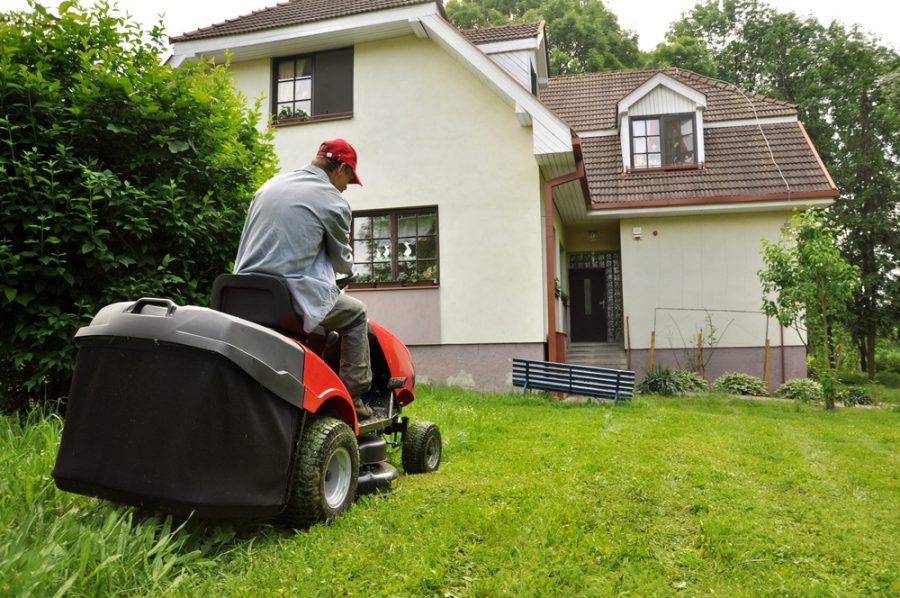8 Important Lawn Care Tasks For The Summer
The warmest season of the year is here, and for a lot of homeowners in Arkansas, this is the busiest time for tending their yards. A number of lawn issues emerge during this season, and it’s crucial to address them appropriately to ensure the healthy growth of turf and other plants in the spring of the following year.
If you are ready for lawn care in Conway, AR for the summer, yard maintenance professionals has listed the eight most important tasks to stay on top of.

1. Watering
With temperatures rising, the likelihood of vegetation drying up is quite high. The best way to counter this typical summer impact is to maintain a well-hydrated lawn.
You may be inclined to water more frequently because of the sweltering weather, particularly at noon, which is okay. However, if you want a more efficient route, stick to a single watering session every day. Do this in the early morning and make sure that you really soak your lawn.
Deep watering will encourage roots to grow deeper, which will allow them to reach moist soil way beneath the ground surface. You will find that with deep watering, even if the topsoil looks parched, your grass and other plants will continue to thrive.
2. Lawn mowing
Mowing the lawn in the summer is actually a much easier task to perform as opposed to other seasons. This is because it’s better for grass to grow extra tall when it’s incredibly hot. Therefore, you don’t need to mow as frequently.
Taller grass is more heat-resistant, and it doesn’t get stressed as much when the weather is hot.
3. Landscaping
Study the layout of your garden or yard and find ways to make the summer heat more bearable for certain heat-sensitive plants you may have growing.
According to the professionals in landscaping in Conway, AR, it will help to create a lot of shade around plant beds. If you cannot move plants that can offer shade, consider investing in decors such as umbrellas, sculptures, and different sizes of garden ornaments.
4. Cleaning and decluttering
Keep your yard clean in the summer. A cluttered and filthy lawn or yard can attract all kinds of pests. If you have bird feeders, get rid of the seeds at the end of the day because come nighttime, all the fallen seeds will attract hungry rodents (most pests live in scarcity during the summer), insects, and even much bigger animals.
Likewise, get rid of any standing water, especially if you are not keen on finding a small reptile cooling off in puddles of water around your home when you wake up in the morning.
Do get rid of piles of leaves and grass clippings as well. These are materials that pests can use to build a nest. The pests can also simply reside under the mounds of leaves and grass.
5. Controlling pests
Pests are highly active in the summer because people’s flourishing lawns offer them their sources of sustenance. If there have been some sightings of pesky fliers and crawlers in your lawn such as slugs, snails, and beetles, get rid of them as soon as possible.
You can set up beer traps for the snails and slugs using shallow dishes and whatever leftover beer you may have at home. Alternatively, use diatomaceous earth, which is quite an affordable pest control agent. You can get a 50-lb bag of diatomaceous earth for around $40, and just a small amount of it will annihilate all kinds of insects buzzing, leaping, and crawling around your lawn.
Diatomaceous earth is a white powder made of microscopic dried sea creatures. It kills garden insects by piercing their bodies and causing dehydration.
It’s important to mention as well that you should inspect your yard for pest nests and hives. If you find any, call pest control services because these usually indicate a colony of insects that can wreak havoc on your property.
6. Weeding
Weeds tend to proliferate in the summer, too, and they compete for the water and nutrients that you provide your turf and other plants. Get rid of them by pulling them out as you see them, burning them using a handheld torch, or spraying them with white vinegar, a kitchen ingredient that has multiple uses in households.
Lawn care professionals also recommend tackling weed problems using corn gluten, which is 98 percent effective against weeds and is also quite affordable.
7. Fertilizing
Summer is an ideal time to boost your lawn’s health using natural fertilizers. You can create your own with coffee grounds, bone meal, and wood ashes. Dedicate a weekend to spread this on your lawn evenly, and most assuredly, this will improve the health of everything you have growing in your outdoor space.
Fertilization is also the solution against fungi growth. Use a tonic of mouthwash, liquid soap, Epsom salts and ammonia to get rid of fungi as well as inhibit thatch buildup.
If the pH level of your soil is low, consider applying chalk or pulverized limestone to it. A soil pH of 5.5 or higher is very helpful for the growth of grass and the development of plantlings.
8. Keeping an eye out for poisonous plants.
Poisonous plants also thrive well in the summer, so learn all about them and make sure that your yard is free from them, especially if you have kids and pets using the lawn as their playground.
Horticulturists identify five key indicators that will help you identify poisonous plants:
- Milky sap
- Naturally shiny leaves
- If they have yellow or white berries
- Umbrella shape
- Three leaves (such as poison ivy and poison oak) or five leaves (such as the Virginia creeper) per stalk
Those are the most critical lawn care tasks to execute this summer. It can genuinely make a huge difference to stay on top of these, especially if you want a beautiful and useful outdoor space for your family to use during the season, and if you want to prevent problems that can cost a lot of money to repair or replace.















